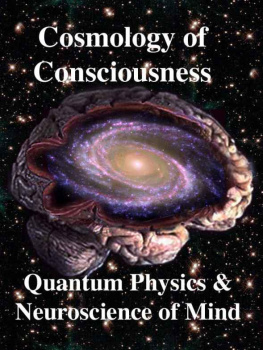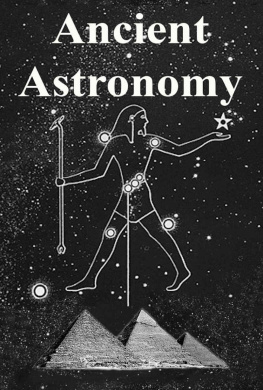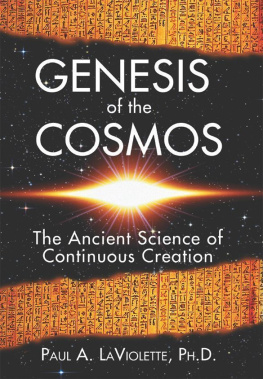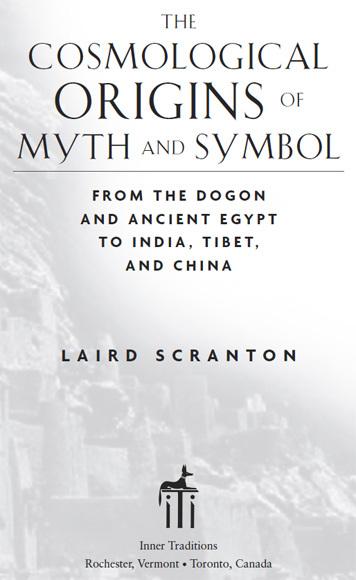ACKNOWLEDGMENTS
In addition to those already thanked in previous volumes, I am indebted to Rich Richins for the use of his beautiful image of Barnards Loop, which was drawn from his website, www.enchant-edskies.net. I would like to express my appreciation to Dr. Nilifur Clubwala, whose many inspired insights and insightful questions have led me again and again to push the boundaries of knowledge of my subject. I would again like to thank John Anthony West for his continued friendship and unwavering support. I would also like to thank Walter Cruttenden for the many kindnesses shown to me at his annual Conference on Precession and Ancient Knowledge. A very great debt of gratitude is owed to William Henry, who has championed my earlier books in his lectures and on radio, and for graciously agreeing to write the foreword for this book.
I would like to give many thanks to my nephew Matt Scranton and brother David Scranton, who were instrumental in acquiring a Na-khiEnglish dictionary for me in China. Thanks also to Christine Mathieu for her patience in allowing me to use her as a sounding board for my Dogon/Na-khi comparisons.
Thanks are due to the late Walter Fairservis, whose classes I unfortunately never took while at Vassar College, but who nonetheless eventually came to influence my outlook on the likely origins of ancient Chinese cosmology. I would again like to thank Nati Nataki at Afrikan World Books in Baltimore for his generosity and ongoing support of my work. I would like to thank Scott Creighton and Gary David for their insightful discussions, which helped to further the direction of this book. I also appreciate the steadfast interest and support that has been expressed for my books by our neighbors on Homestead Avenue in Albany. And last, but not least, I owe thanks to my wife, Risa, son, Isaac, and daughter, Hannah, for their quiet conspiracy throughout my studies to continue to treat me very much as they might treat an actual, normal person.
CONTENTS
CHAPTER ONE
CHAPTER TWO
CHAPTER THREE
CHAPTER FOUR
CHAPTER FIVE
CHAPTER SIX
CHAPTER SEVEN
CHAPTER EIGHT
CHAPTER NINE
CHAPTER TEN
CHAPTER ELEVEN
CHAPTER TWELVE
CHAPTER THIRTEEN
CHAPTER FOURTEEN
CHAPTER FIFTEEN
CHAPTER SIXTEEN
CHAPTER SEVENTEEN
FOREWORD
From the moment I held Laird Scrantons first book Sacred Symbols of the Dogon I knew I was in for a mind-expanding excursion. In the foreword, John Anthony West spelled it out right from the start: This booksmall in size, large in significanceproves that the very latest scientific work on the structure and genesis of matter, quantum theory, and possibly both string theory and torsion theory was known in very ancient times. However, it was (and in certain cases still is) expressed in myth and symbol rather than in mathematical formulas.
Sacred Symbols of the Dogon united my left and right brains as it spiraled my imagination into an extraordinary and advanced mindset that existed on this planet millennia ago. I felt that no one has reached so far into the origin and meaning of symbols as Laird, and I was thrilled that he included us on the journey.
Lairds insights have brought clarity to questions many researchers have been asking as well as providing corroborating evidence of a lost, ancient sacred science based on a vastly detailed understanding of the basic forces of the universe.
For instance, I had made the uncanny match between the shape of the ancient Egyptian ships of eternity and modern depictions of wormholes. Theyre virtually identical symbolically and in stated purpose. I wondered if the gods of ancient Egypt shown riding upon these ships into the stars could have been opening wormholes and traveling through these cosmic tunnels or shortcuts to nearby star systems. Such a thought is, of course, nonsense to traditionalists. It blew my mind when Laird compared a diagram from string theory proponent Brian Greenes The Elegant Universe of the fabric of space tearing and two ends of a wormhole starting to growwith the ancient Egyptian hieroglyph for the word to tear. They matched perfectly. I could feel Lairds excitement at this discovery, and share it. Come closer, the gods seemed to be saying. Open your minds, little ones. Reach for the stars. Sail the stars, with us.
Do wormholes exist in the universe? Are there ancient beings that can tear holes in space? Did they leave us clues for doing so, or better yet, a codebook containing the secrets of the nature of creation? These tantalizing questions stretch our minds to the limits. I, for one, am glad to have Laird Scranton doing the challenging and deep symbol work he is doing. His discoveries about this original symbol code have placed us on the cutting edge of knowledge and on the edge of a new world. Now its up to us to set sail.
After reading Lairds work, who can read of a hole tearing open in heaven, as happened, for example, during the baptism of Jesus by John the Baptist (Mark 1: 911), and not wonder if there is some deep scientific message embedded in this crucial scripture. Before he was baptized, Mark refers to Jesus as from Nazareth of Galilee (Mark 1:9), whereas afterward he is the Nazarene (Mark 1:24), suggesting a transformation at the time of baptism. The Baptism of Jesus elevated him to a higher state of consciousness. Based on what Laird has revealed about ancient Egyptian myths and symbolism filtering into Judeo-Christian tradition, it is likely there is some secret, cosmological knowledge to be found here. We simply need to be brave and inquisitive enough to seek it.
Of late, it is becoming increasingly clear that its going to take a revolution, or ascension, in our thinking in order to save our species, let alone fulfill our potential. It is going to take an integrated mind in tune with nature and her laws. This means a mindset that spends its precious energy on solving the mysteries of the universe (as opposed, for example, to contemplating the mysteries of why the economy wont improve or why this or that political party wont simply go away). This mindset is set on wholeness, even holiness. As Laird so beautifully tells us in his present work, this is the mindset of the ancients, and it leads to an enlightening source.
The Cosmological Origins of Myth and Symbol extends the search for the enlightening source to the cosmologies of India, Tibet, and China. As Laird synchronizes these cosmologies with the ancient Egyptian and Dogon in his unique and elegant way, one readily realizes that what he has placed in our hands is a key to a legacy all of us have sought.
WILLIAM HENRY
William Henry is an investigative mythologist and author of numerous books on ancient mythology and symbolism. He is the host of the Revelations radio program.
INTRODUCTION
If there were a single phrase or concept that could be said to best characterize ancient cosmology, it might be the phrase, originating in the Hermetic texts, As above, so below. This statement expresses the cosmological idea of the one thingthe notion that what happens above us in the macrocosm of the universe is fundamentally similar to what transpires below us in the microcosm, at the next lower level of creation that conceptually precedes reality as we perceive it. Ancient concepts such as this have long held a fascination for the student of unsolved mysteries. No doubt this fascination is driven partly by our seemingly innate interest in anything old. By that standard, the myths and symbols of ancient cosmology, which are thought to date from the earliest dawn of antiquity, surely represent some of our oldest, and therefore most interesting and precious, artifacts. This book is the third in a series of volumes intended to shed new light on the nature of ancient cosmology and language. The field or discipline of ancient cosmology examines how these myths and symbols originally took their definition. The impulse to write these books comes as a response to the deep similarities in the cosmological myths of widespread cultures and as a reaction to the, in my view, largely inadequate rationales that are traditionally offered to explain these similarities.





